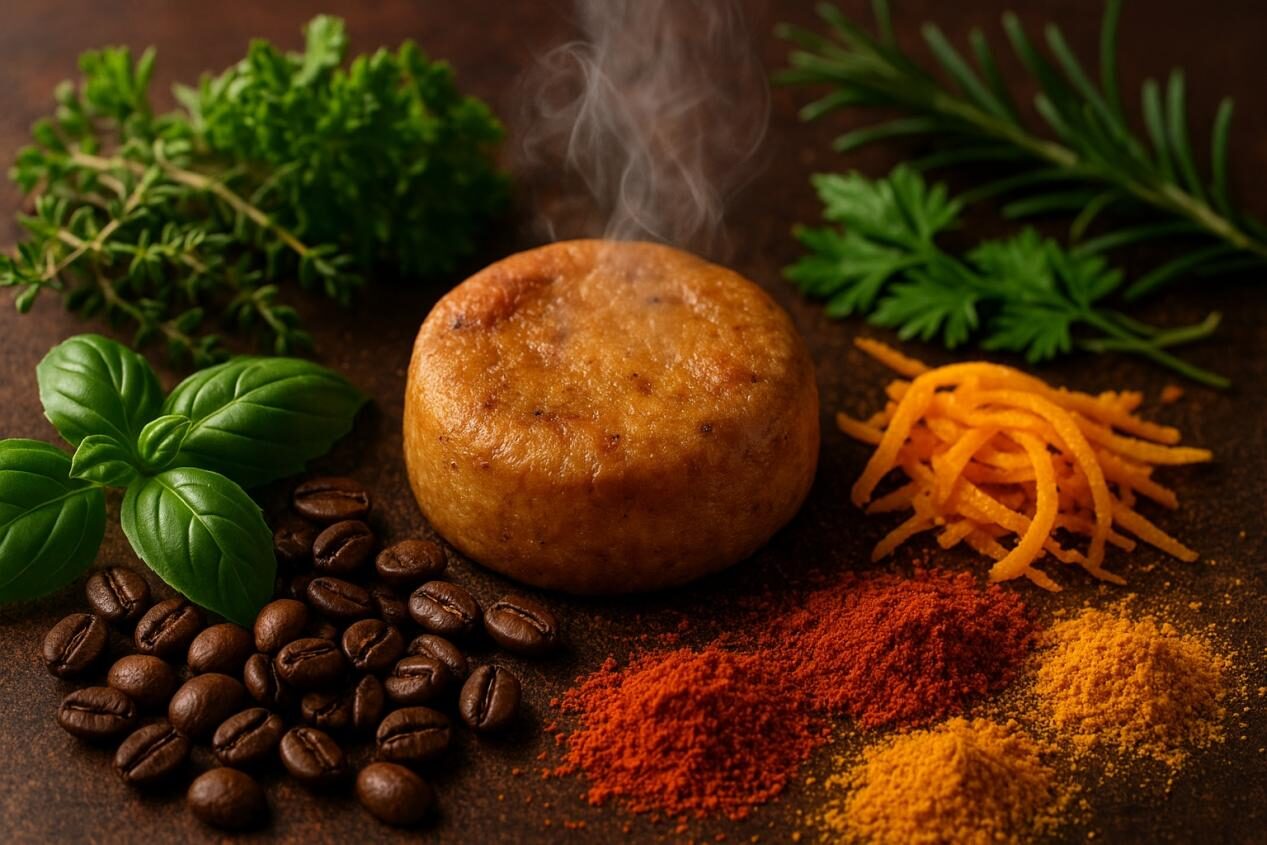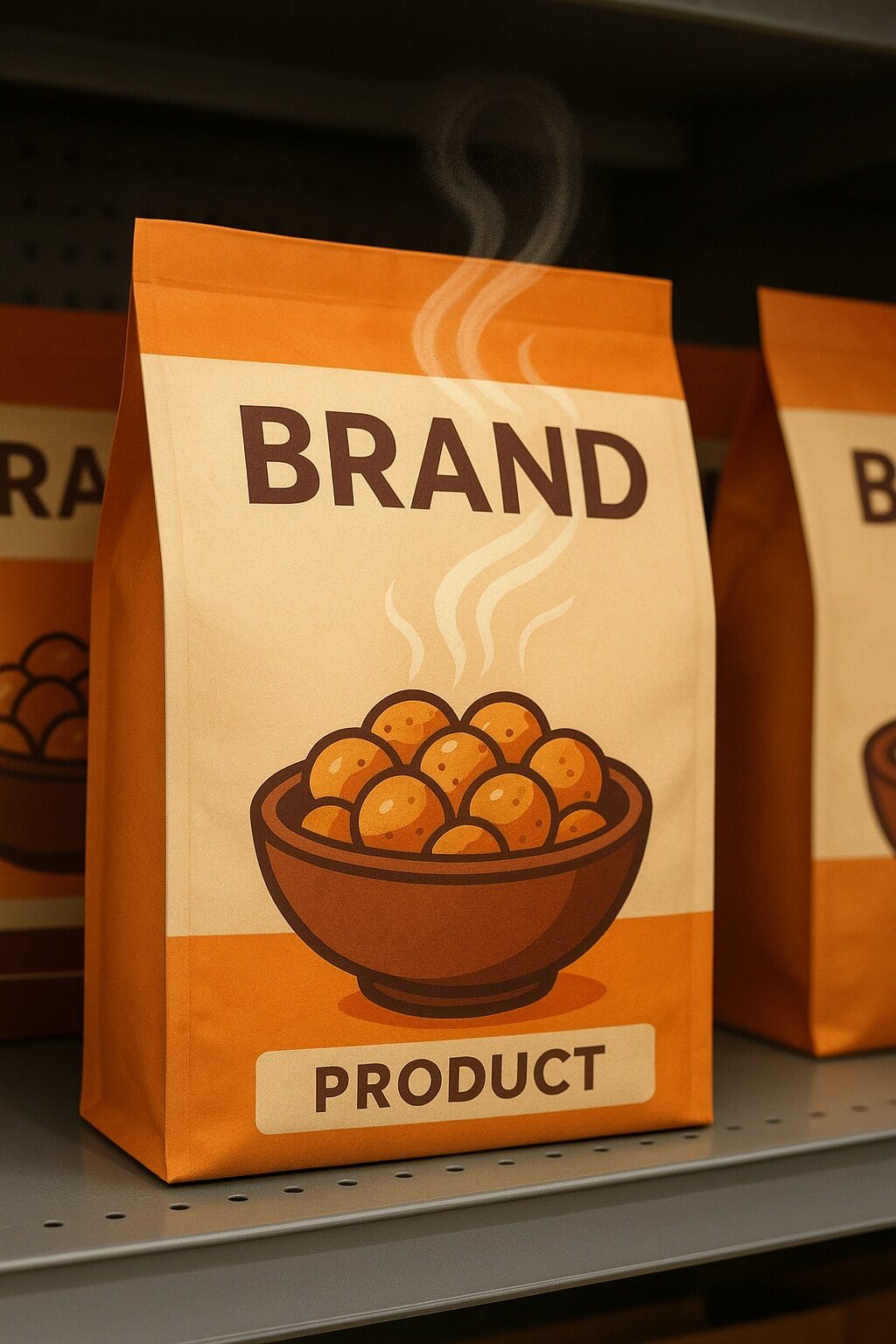超越味道:解锁食物的完整感觉范围
在复杂的食物和饮料世界中,品尝通常是中心舞台,但仅仅是交响乐的一部分来定义我们的烹饪经验。经常被估计但功能强大的同行是香气。我们的口感刺激了我们的味蕾,触发了回忆,并深刻影响了我们对风味的看法。对于辨别食品制造商,理解和专业利用食品香气不仅是审美选择;这是真正的战略当务之急提升食品并提供无与伦比的感官体验给消费者。这篇博客文章将深入研究复杂的科学和精致的艺术性。优质食品级气味创造更引人注目,令人难忘的,最终更成功的食品。

新鲜食材和蒸面包
一个。香气在风味感知中必不可少的作用
要真正欣赏香气的力量,我们必须首先了解其与口味的共生关系。舌头上的味蕾检测到五种基本口味(甜,酸,咸,苦,鲜味),但我们认为“风味”的绝大部分实际上来自我们的嗅觉。
- 后鼻嗅觉:当我们咀嚼食物时,挥发性芳香化合物被释放,然后向上传播鼻腔中的嗅觉受体。这种“后侧向”途径不同于“正骨”嗅觉(在进食前通过鼻子闻起来闻到鼻子),这是香气对我们对复杂口味(如“草莓”或“烤鸡”等复杂口味的感知的主要机制。没有香气,大多数食物会味道平淡而模糊,减少到其基本味道成分。
- 期待和期望:食物的香气通常在其口味之前,建立预期并设定期望。富有的诱人的香气可以使简单的菜看起来更具吸引力,甚至在触摸舌头之前。相反,缺乏香气或不愉快的香气可以完全阻止消费。
- 情感联系和记忆:气味是具有独特的记忆和情感的独特触发因素。特定的香气可以立即将我们带回童年的厨房或令人难忘的假期,与产品建立了深厚的,经常潜意识的联系。利用这一点的品牌可以增强消费者的忠诚度。
- 掩盖和增强:香气可以从策略上使用,以掩盖不良的off声(例如,来自某些成分的苦味,植物蛋白的“豆质”味)或增强所需的属性,使甜蜜的香气更甜或咸味更丰富,而不改变基本味道。这将香气定位为风味增强剂.
鉴于这种深刻的影响,投资优质食品级气味不仅是一种放纵,而且是产品差异化和消费者满意度的关键组成部分。
B香气科学:制作食品级气味
创建食品级气味是一门高度专业的科学学科,将高级分析技术与风味师的直观艺术相结合。它涉及识别,提取和合成芳香族化合物以重新创建或发明特定的气味。
1。解码芳香剖面:分析工具
与风味匹配一样,精确的分析工具对于理解香气的化学组成至关重要:
- 气相色谱 - 质谱法(GC-MS):这是风味分析的基石。 GC分离了样品中存在的挥发性芳香族化合物,而MS则通过其独特的质谱识别并量化了每种化合物。然后,熟练的风味化学家可以查明主要负责特征香气和味道的关键“影响化合物”。
- 气相色谱 - 野生型(GC-O):GC的引人入胜的扩展,其中分离的化合物被呈现给人类的“嗅探器”(受过训练的感觉小组成员),因为它们从柱上洗脱了。这使科学家可以将特定的化合物与它们的感知香气相关联,从而确定哪些化合物是最活跃的,即使存在很小的浓度。
- 固相微萃取(SPME):一种非侵入性抽样技术,用于从食品的顶空中提取挥发性化合物,从而提供了其香气概况的快照,因为它会被消费者所感知。
这些工具为所需的香气提供了“蓝图”,详细介绍了特定分子及其比例。
2。采购和创造:优质成分
优质食品级气味建立在全球范围或通过精确合成创建的高质量原材料的基础上。这些可以包括:
- 天然提取物:通过蒸馏,溶剂提取(带有批准的天然溶剂)或冷压(例如,柑橘精油)等工艺,直接从水果,蔬菜,香料,草药和植物药等自然来源得出。这些因其真实性高度评价,并且通常与“干净的标签”需求保持一致。
- 自然芳香学:化学上与自然界中发现但合成产生的化合物相同。尽管它们可能并不总是符合“自然”标签标准,但它们提供了一致的质量和通常的成本效益。
- 人工芳香学:在自然界中找不到的化合物,而是合成以模仿特定香气或创建新颖的香气。它们的使用趋势正在下降,但仍具有特定的应用。
- 反应口味(过程口味):通过受控的Maillard反应(例如,加热氨基酸和还原糖)产生,这些反应对于咸味,肉类或烤香气至关重要。
这项艺术在于香料师可以将这些多样化组成部分(通常数百种)融合的能力,可以创建一个和谐且真实的芳香曲线,在最终食物矩阵中稳定,一致且最佳地性能。
C整合香气:技术挑战和解决方案
在食物中添加香气并不是一个简单的步骤。众所周知,挥发性化合物是脆弱的,在加工,存储和消费过程中可能会丢失或改变。
1。通过处理稳定
-
热敏感性:许多芳香族化合物在高温下(例如烘烤,巴氏杀菌,挤出)降解或蒸发。解决方案包括:
- 封装:在保护性基质(例如阿拉伯胶,麦芽糖糊精)中,微囊泡的风味化合物使它们免受热,氧气和水分的侵害,仅当产品被消耗或补充食品时才会释放。
- 温度稳定的配方:在风味配方中,使用挥发性较小或更强大的芳香化合物。
- 后处理加法:如果可行,在热处理后添加敏感的香气。
-
光和氧气灵敏度:暴露于光和氧气会导致芳香族化合物的氧化和降解,从而导致非音量或风味丧失。解决方案涉及:
- 抗氧化剂:在风味或食物基质中掺入天然抗氧化剂。
- 不透明包装:使用阻断紫外线的包装。
- 修改的气氛包装(地图):降低包装中的氧气水平。
- pH和矩阵相互作用:食品及其其他成分(脂肪,蛋白质,水活性)的pH值可显着影响香气稳定性和感知。调味师必须制定特定pH范围内鲁棒的气味,并且不会与蛋白质或脂肪不必要地结合,这可能会减少芳香的影响。
2。确保一致的释放和感知
- 前提与身体注意事项:完整的香气曲线具有“前调”(最初的气味),“身体音符”(香气的主要特征)和“末端音符”(挥之不去的气味)。实现适当的平衡确保了一个完整而愉快的感官之旅。
- 受控释放技术:除了简单的封装之外,还可以采用先进的技术来控制随时间或在特定条件下(例如,咀嚼口香糖的时间释放口味,通过热或水分激活的口味)的香气的释放。
- 剂量和均匀性:确保香气均匀地分布在整个产品中,并以正确的浓度分布,以产生预期的影响而不会过分动力。太少的香气会使产品看起来平淡。太多令人反感。

实验室中的嗅觉分析
D优质食品级气味的战略应用
除了简单地使食物气味变得良好,策略性地应用优质食品级气味提供强大的好处:
- 增强感知的新鲜感:即使已经处理或储存了一段时间,即使产品已被处理或储存,鲜香(例如,饮料中的柑橘类柑橘味)也可以显着增强对新鲜度的感知。
- 补偿成分减少:在糖,脂肪或盐降低的产品中,香气可以在补偿口味强度和口感的丧失,保持令人满意的感觉形象方面发挥至关重要的作用。例如,强烈的香草香气可以增强低糖甜点中甜度的感知。
- 掩盖不良说明:如前所述,特定的香气化合物可以有效地掩盖功能成分(例如蛋白质粉,纤维,某些维生素)或替代加工方法中固有的非主张。这是至关重要的方面风味增强剂在复杂的配方中。
- 创建独特的品牌身份:独特且执行良好的香气可以成为品牌的标志性元素,即立即识别,并将其与竞争对手区分开。想一想某些咖啡混合物或糖果的独特香气。
- 推动创新和新颖性:大胆,不寻常或趋势的香气会引起兴奋并吸引新的消费者,促进产品发布和线条扩展。这通常涉及将熟悉的口味概况与意外的芳香曲折结合在一起。
- 为“清洁标签”产品增加价值:随着产品转向更简单的成分,天然香气对于没有人造添加剂而增强消费者信任的预期口味变得越来越重要。
E.促进芳香的合作:Cuiguai调味优势
实现芳香的卓越需要具有深厚科学知识,广泛的成分组合以及对感官感知的细微理解的合作伙伴。
Cuiguai调味料是创建和应用的杰出领导者优质食品级气味。他们致力于创新和掌握香气化学的掌握,使他们能够开发出超越品味的精致解决方案提升食品通过提供迷人的嗅觉体验。 Cuiguai味的专家团队利用了最先进的分析技术,并与客户紧密合作以了解特定的产品矩阵和处理条件。无论您是要增强自然的感知,掩盖挑战违约的挑战,还是创建一个真正独特的芳香签名来定义您的品牌,Cuiguai味道都会提供量身定制的风味增强剂和定制的香气曲线。他们严格的质量控制和对高质量原材料的奉献精神确保其气味的稳定性和影响,使其成为实现无与伦比的理想合作伙伴感官体验和市场成功。

食品包装展示
F.未来是芬芳:食品香气的创新
前沿食品香气正在不断扩展。对神经营销和感官科学的研究正在为香气如何影响购买决策和情感反应提供更深入的见解。自然提取技术的进步正在产生新的真实的芳香化合物。此外,智能包装的开发可以在开放时或在特定温度下释放香气,为未来的产品创新提供了令人兴奋的可能性。
对于具有前瞻性的食品制造商,拥抱香气的艺术和科学不再是可选的。这对于创建在多感官层面上真正引起消费者产生共鸣的产品至关重要。通过利用优质食品级气味,品牌不仅可以提供出色的口味,而且可以建立强大的情感联系,在拥挤的市场中与众不同,并最终提高整个饮食体验。食物的未来不仅在于它的味道,而且还与它的气味,使我们的感觉以及它留下的持久印象。

分享美好时光的微笑
关键字: 食品香气,增强风味,高级口味,感官体验
作者:Cuiguai调味料研发团队
发表者:广东独特香精有限公司
上次更新:八月 14,2025年



